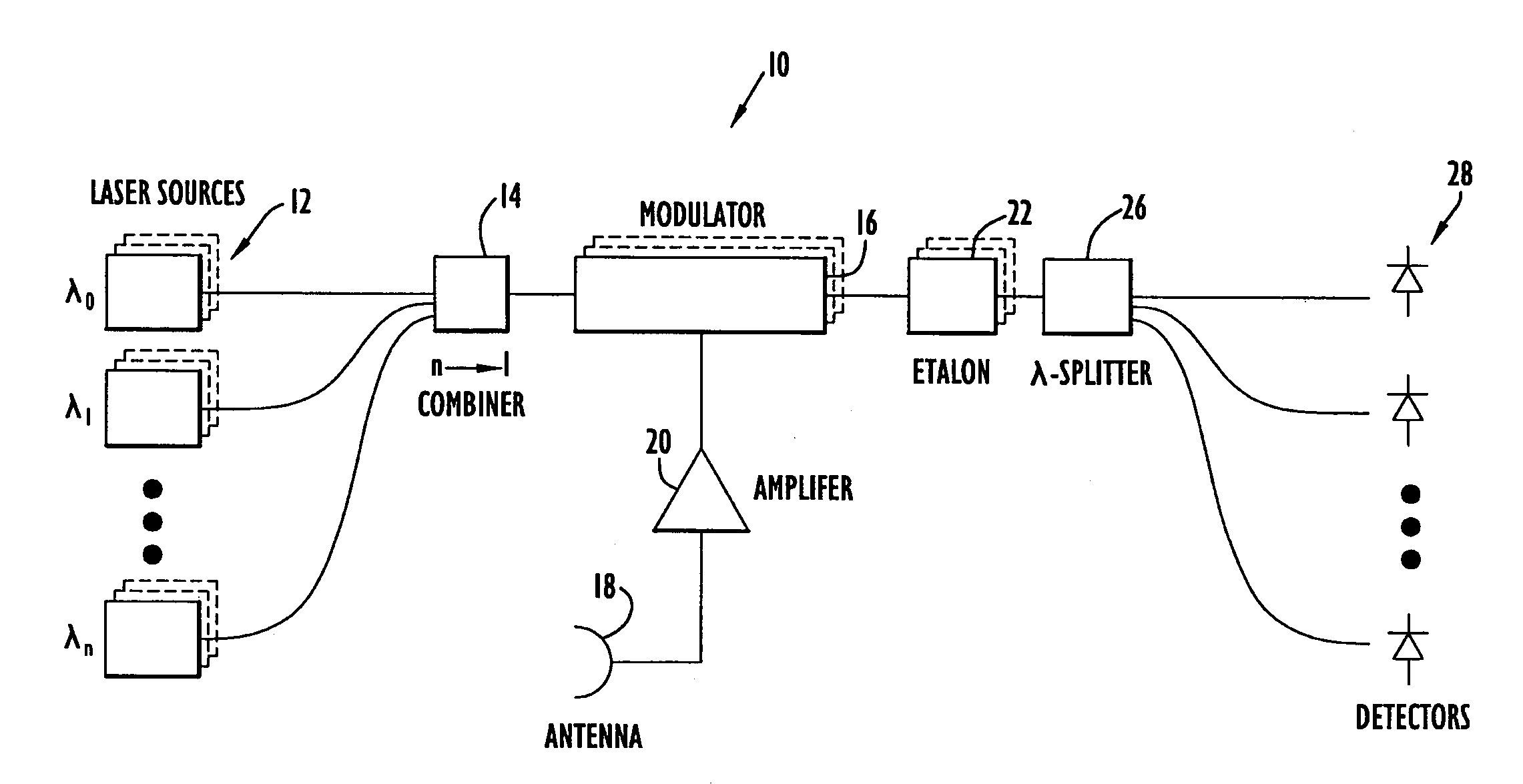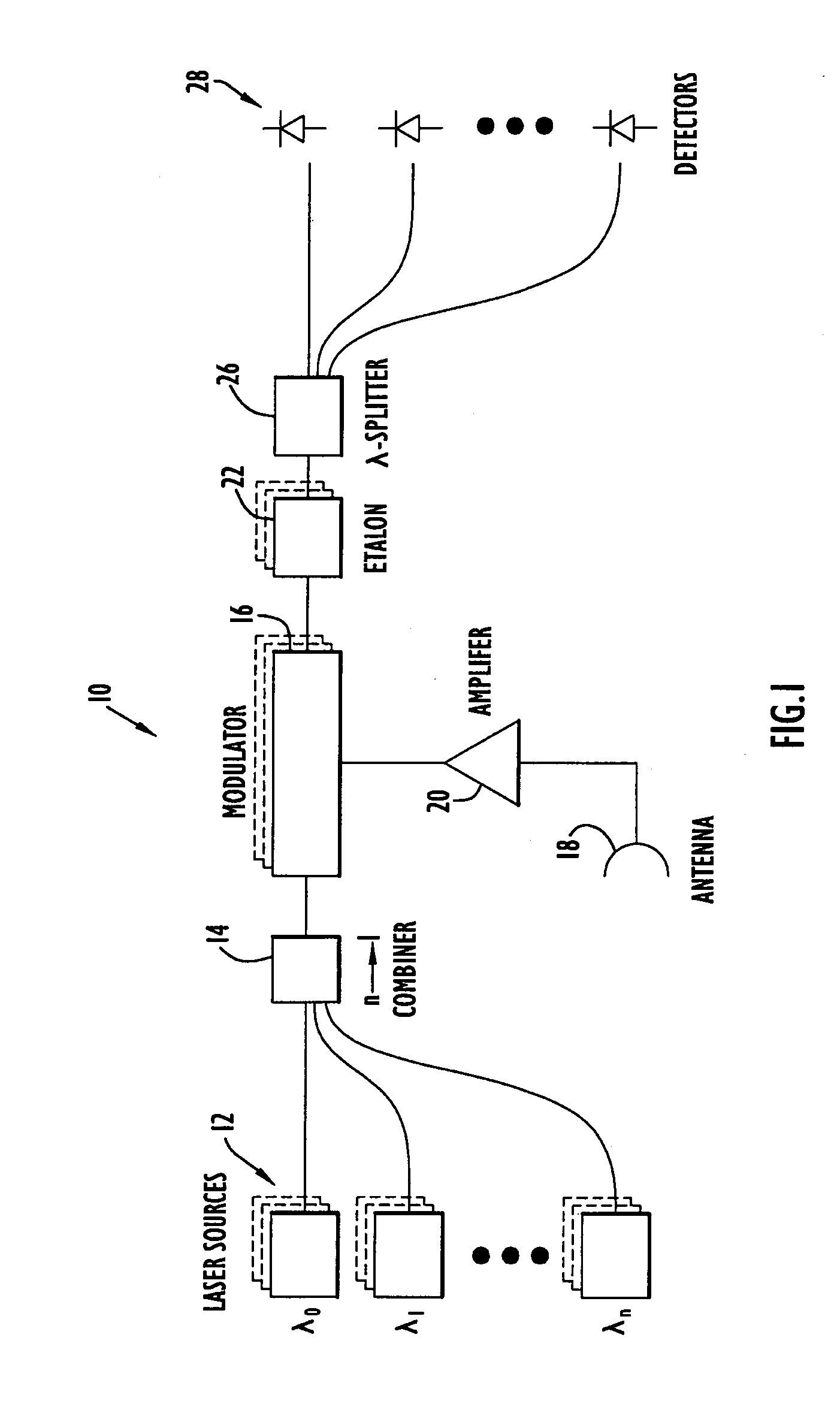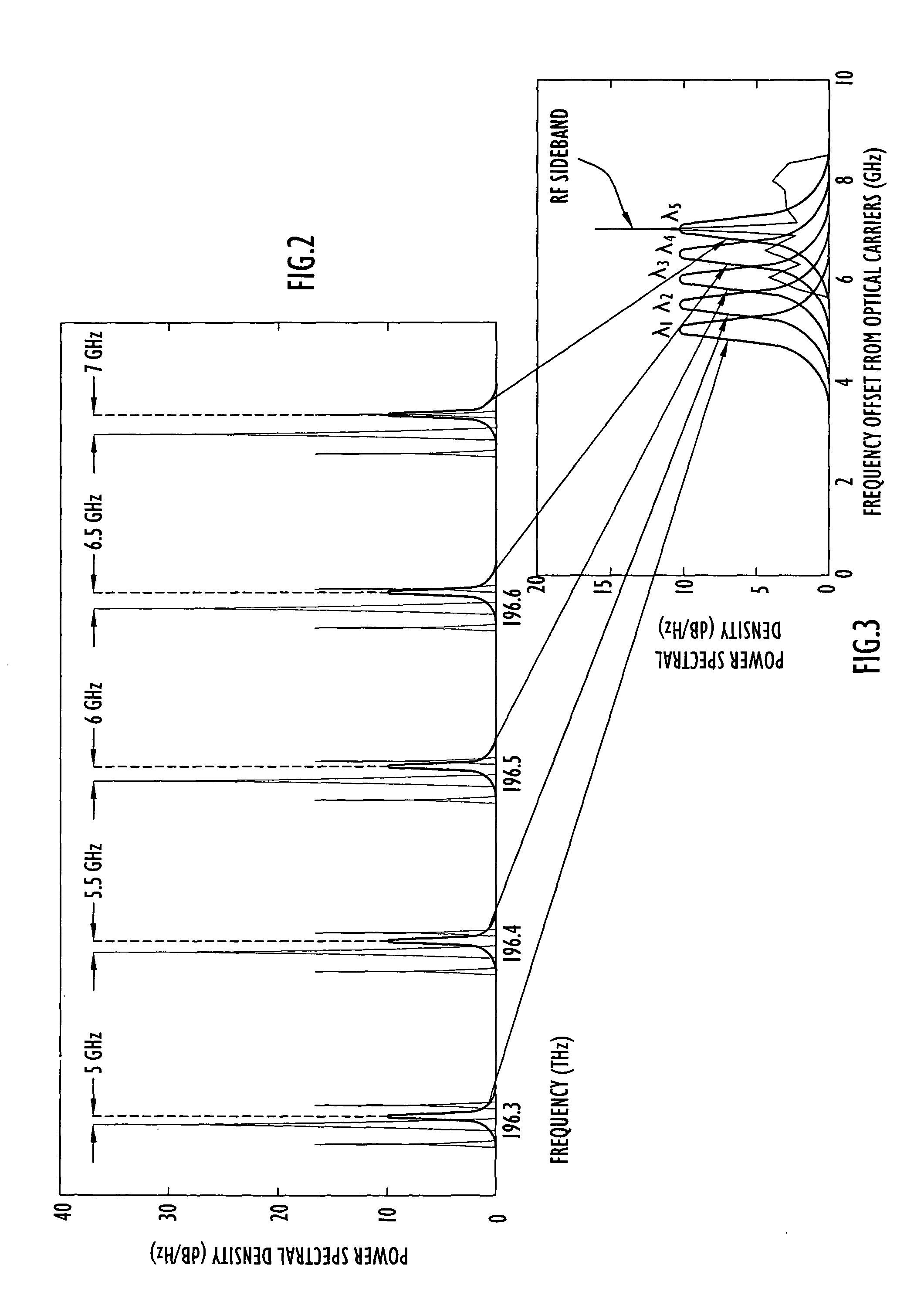Photonic channelized RF receiver employing dense wavelength division multiplexing
a wavelength division multiplexing and receiver technology, applied in the field of photonic channelized receivers, can solve the problems of not providing a near real-time wideband spectral monitoring ability, preventing the ability to detect burst signals, and rf spectrum analyzers, etc., to achieve high reliability and sensitivity, and reliably detect short-duration burst signals
- Summary
- Abstract
- Description
- Claims
- Application Information
AI Technical Summary
Benefits of technology
Problems solved by technology
Method used
Image
Examples
Embodiment Construction
[0022]A photonic channelized receiver 10 useful for RF spectrum analysis is illustrated in FIG. 1. Receiver 10 includes a set of laser sources 12 that supply a respective set of optical signals whose wavelengths are separated by substantially equal spacings. Specifically, a first laser source generates an optical signal at a particular wavelength λ0. The second laser source generates an optical signal at a longer wavelength λ1. Since these optical signals are used to define receiver frequency channels, their separation can be described in terms of frequency. For example, the optical signal at λ0 can be separated from the optical signal at λ1 by a nominal frequency of 99.5 GHz. An optical signal generated by a next laser source at a next longer wavelength λ2 is separated from the optical signal at λ1 by another 99.5 GHz, and each successive optical signal generated up to wavelength λn is separated from optical signals at adjacent wavelengths by 99.5 GHz. In this manner, a set of equa...
PUM
 Login to View More
Login to View More Abstract
Description
Claims
Application Information
 Login to View More
Login to View More - R&D
- Intellectual Property
- Life Sciences
- Materials
- Tech Scout
- Unparalleled Data Quality
- Higher Quality Content
- 60% Fewer Hallucinations
Browse by: Latest US Patents, China's latest patents, Technical Efficacy Thesaurus, Application Domain, Technology Topic, Popular Technical Reports.
© 2025 PatSnap. All rights reserved.Legal|Privacy policy|Modern Slavery Act Transparency Statement|Sitemap|About US| Contact US: help@patsnap.com



